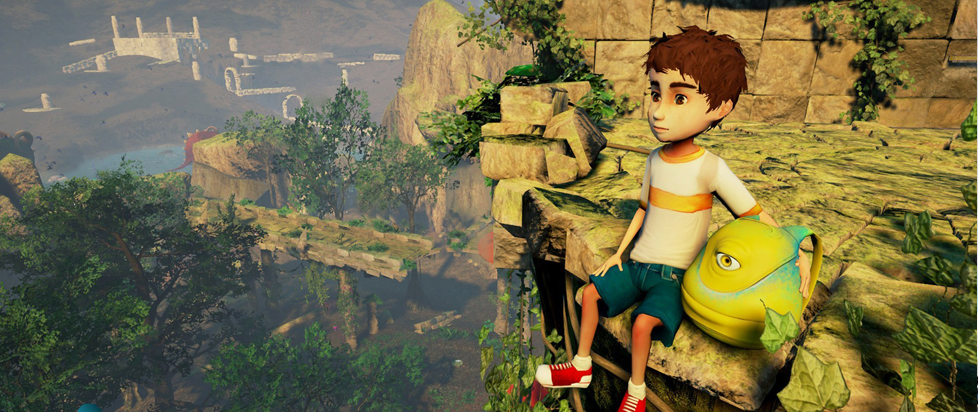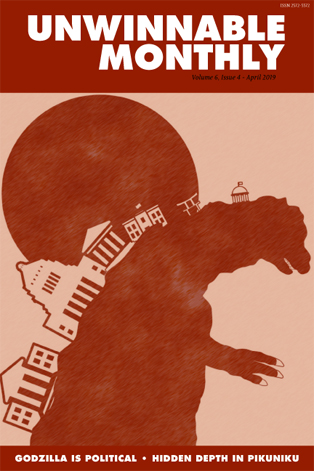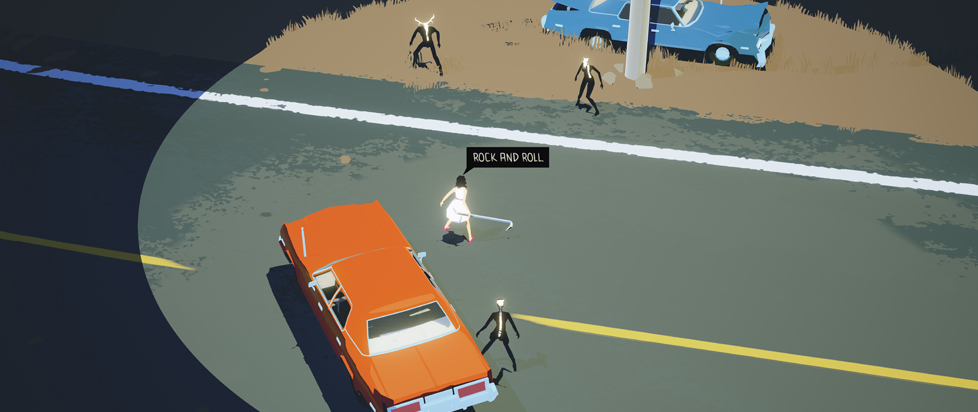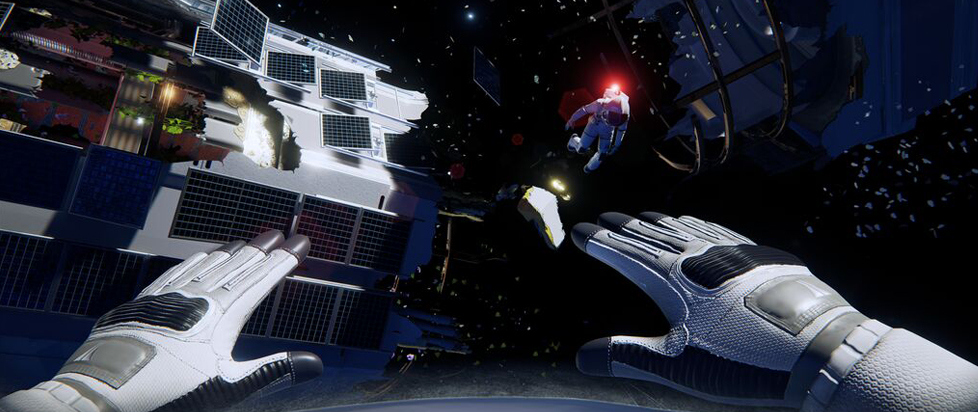
The Path of Calydra
 This story is a reprint from Unwinnable Monthly #114. If you like what you see, grab the magazine for less than ten dollars, or subscribe and get all future magazines for half price.
This story is a reprint from Unwinnable Monthly #114. If you like what you see, grab the magazine for less than ten dollars, or subscribe and get all future magazines for half price.
———
This series of articles is made possible through the generous sponsorship of Epic’s Unreal Engine. While Epic puts us in touch with our subjects, they have no input or approval in the final story.
———
Were you ever lost? I don’t mean like momentarily separated from your parents at the mall. I mean genuinely, bewilderingly lost, the sort of lost that comes upon you like waking up from a dream, when you look around and have no idea where you are or how you got there, let alone how to get back. It is a disorienting mix of panic and despair.
Got an idea of how that might feel? Now pretend you’re just a kid, and you’re not on some unfamiliar street, but an entirely alien world.
That’s the basis of The Path of Calydra, a forthcoming third person adventure game from Brazilian developers FinalBoss. The game follows a boy named Matheus who is transported from his suburban home to a strange world. Unlike most people who get lost, Matheus has the benefit of a companion, the shape-shifting creature known as Calydra. In order to get home, Matheus must explore the world, overcome its challenges and help Calydra restore his powers.
We spoke to Marcio Vivas, owner and founder of FinalBoss, about kid adventures, growing up and the game design scene in Brazil.
What inspired Path of Calydra? What do you hope to accomplish with it?
Videogames have follow me since the day I got my first Telejogo (a console developed and distributed by the Brazilian Ford-Philco division, containing the game Pong) in 1977. Ever since then, I experienced practically every console and computer available on the market and, with every new device or game, many experiences were gathered into my personality. Games like Heart of Darkness, Zelda, ICO and Shadow of the Colossus inspired me a lot. Clearly, Calydra has a lot of unique stuff, and I want the players to notice it as they venture forth in the strange lands of Calygore.

Can you elaborate on the relationship between Calydra and Matheus , both in the sense of the narrative as well as mechanics?
Since Matheus ended up on a completely different world and Calydra can not take a form to regain its powers itself, the relationship between them is of interdependence. They very much need each other to survive. Through the adventure, a strong bond between them forms and this interdependence gives way to friendship, reciprocity and, especially, trust.
All these events are reflected in the game mechanics we implemented once Calydra starts to regain its powers and forms over the adventure. These powers are related to the traditional air, earth, fire and water elements. After an elemental form is retrieved, its respective spells are unlocked and can provide various related skills. For example, the Aerys form (air element) allows Matheus to float, become invisible and create clones of himself, among other things. On the other hand, the Gyrus form (earth element) will allow Matheus to climb to places that were inaccessible before, fight with Calydra’s giant arms and so on . . .
What do you think the appeal is for having a kid as your protagonist? Does it make the world seem more or less dangerous?
Matheus is an ordinary boy. He has no special powers and does whatever a boy his age does. He is clever, agile and very curious, and these characteristics will help or jeopardize him, depending on the situation. Though he seems to be the only human alive on Calygore, his trip is aided somewhat by Joanna’s diary pages, which are spread all over this new, ready-to-be-explored world. Joanna’s point of view as a teenage girl blends with Matheus’ perception of Calygore. With all the dangerous situations he faces, Matheus soon realizes that he needs to grow up and stay strong in order to return to his world. Maybe the greatest danger Calygore has to offer is Matheus distance from his parents. Facing giant monsters might be just another part of his journey of growing.

Despite being a strange world full of monsters, Calygore is pretty whimsical. How did you approach designing the world?
I wanted the differences between Matheus’ earthly universe and the world of Calygore to be enormous. I wanted gigantic creatures living with small ones and I wanted Matheus to feel completely lost before all the different fauna and flora on the land. The world of Calygore was once inhabited by strange wizards, which gave me the chance to build some ruins of the previous civilization. Thenceforth, I started to imagine what I should insert on the scenery in my head, and this boiler of ideas created what we released so far.
Is there a large game development scene in Brazil? Can you talk a bit about your experience?
The Path of Calydra is our second original game. The first one was Chromabot, released on Android and iOS. It was also the runner-up in the 2012 Square-Enix Latin America Game Contest.
In Brazil, there are many highly qualified studios nowadays and a lot of games have been released to different platforms. ABRAGAMES, a national developers association, has helped the national game scene a lot, by arranging exposure at international events. Some state associations, like RING (Rio de Janeiro’s Game Developers), of which I am also a member, promote events in their respective states, helping the most experienced developers get in touch with new ones who are starting their developing teams. Major national events like BIG (Brazil’s Independent Game Festival) and BGS (Brasil Game Show, the biggest South American game event) attract a huge audience annually in São Paulo.

What do you hope players take away from Path of Calydra?
Sometimes I think that we, adults, lose our capacity for abstracting some things and our ability to dream, to let the imagination take us on a journey. I think we are far more literal. Many times, a boy or a girl ends up dreaming and allowing things to happen more naturally, even in the most unusual moments. Growing and improving the character without losing the capacity for dreaming is what the narrative proposes.
Why did you choose Unreal Engine 4? Are there any unexpected benefits or challenges to it?
Actually, we started the project on Unity but since the team was small, inexperienced and having trouble with creating the scenarios, we decided with the help of our programmer to try the Unreal engine. In my head, it was something “out of this world” while, at the same time, was what most major companies were using.
What happened is that, in just a few days, I was much more familiar with Unreal Engine than with Unity. The interface, how everything was laid out on the screen, everything made the level design and scenario creation easier, allowing me to build and test in a quicker, more fluid way. Not that the game couldn’t be made on Unity, but my learning curve in relation to Unreal was way quicker and easier.
Has the Dev Grant allowed you to do anything you otherwise would not have been able to?
Absolutely! The money I got through the DevGrant allowed the team to increase, going from 3 to 7 people, which helped a lot on the developing of the game and will impact positively on the quality of The Path of Calydra, for sure.
* * *
For more on The Path of Calydra, check out the official site.




